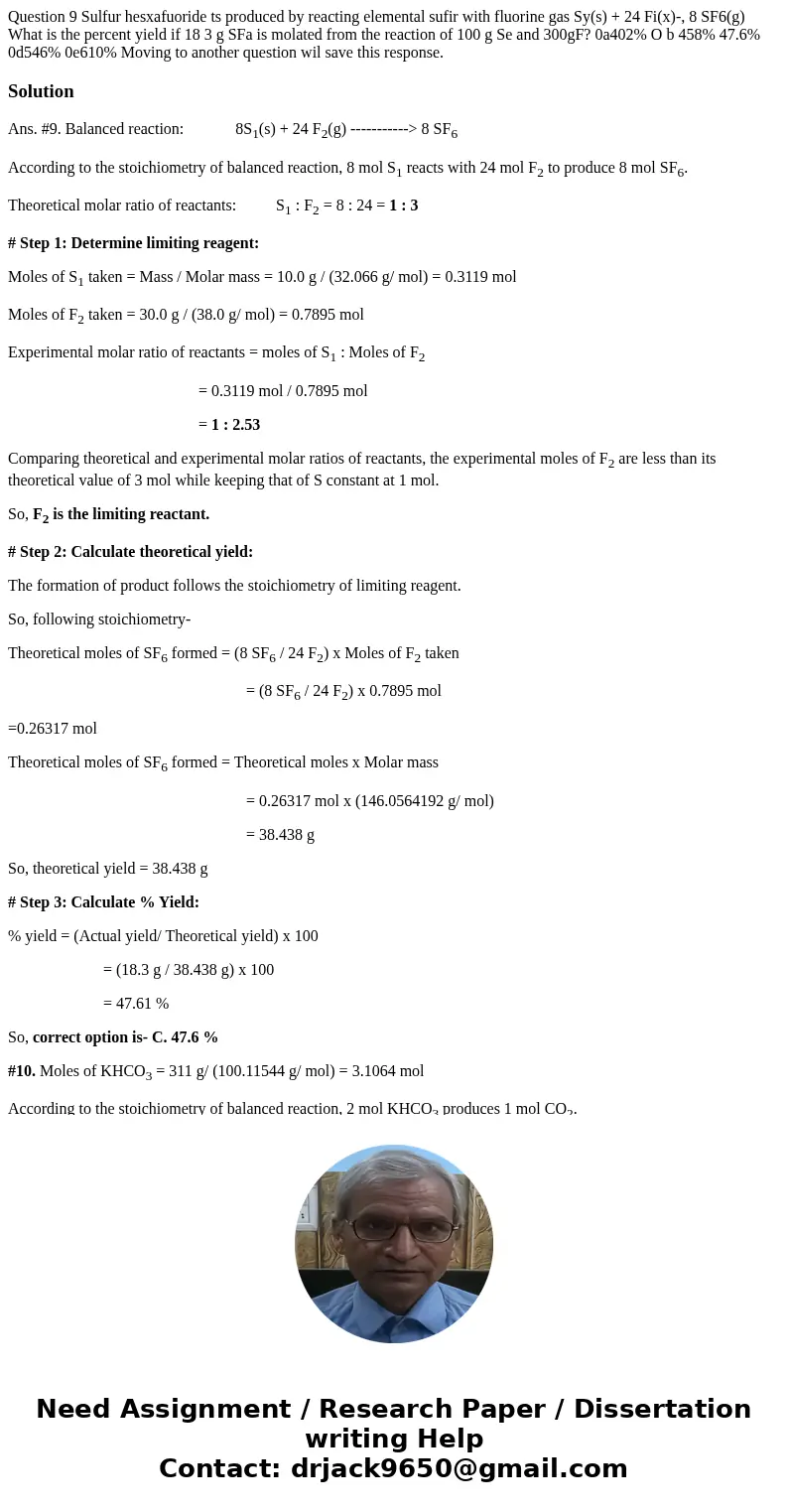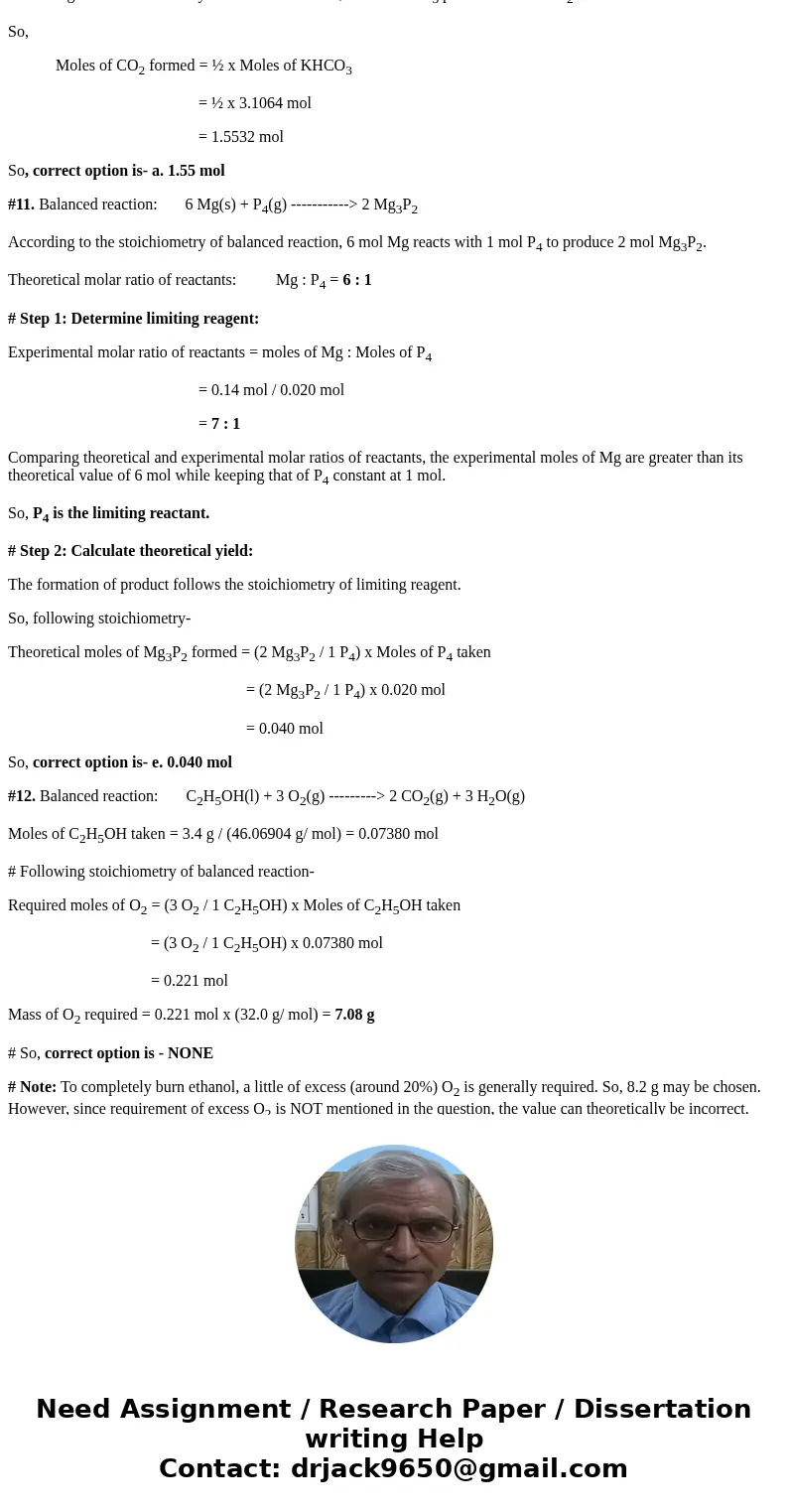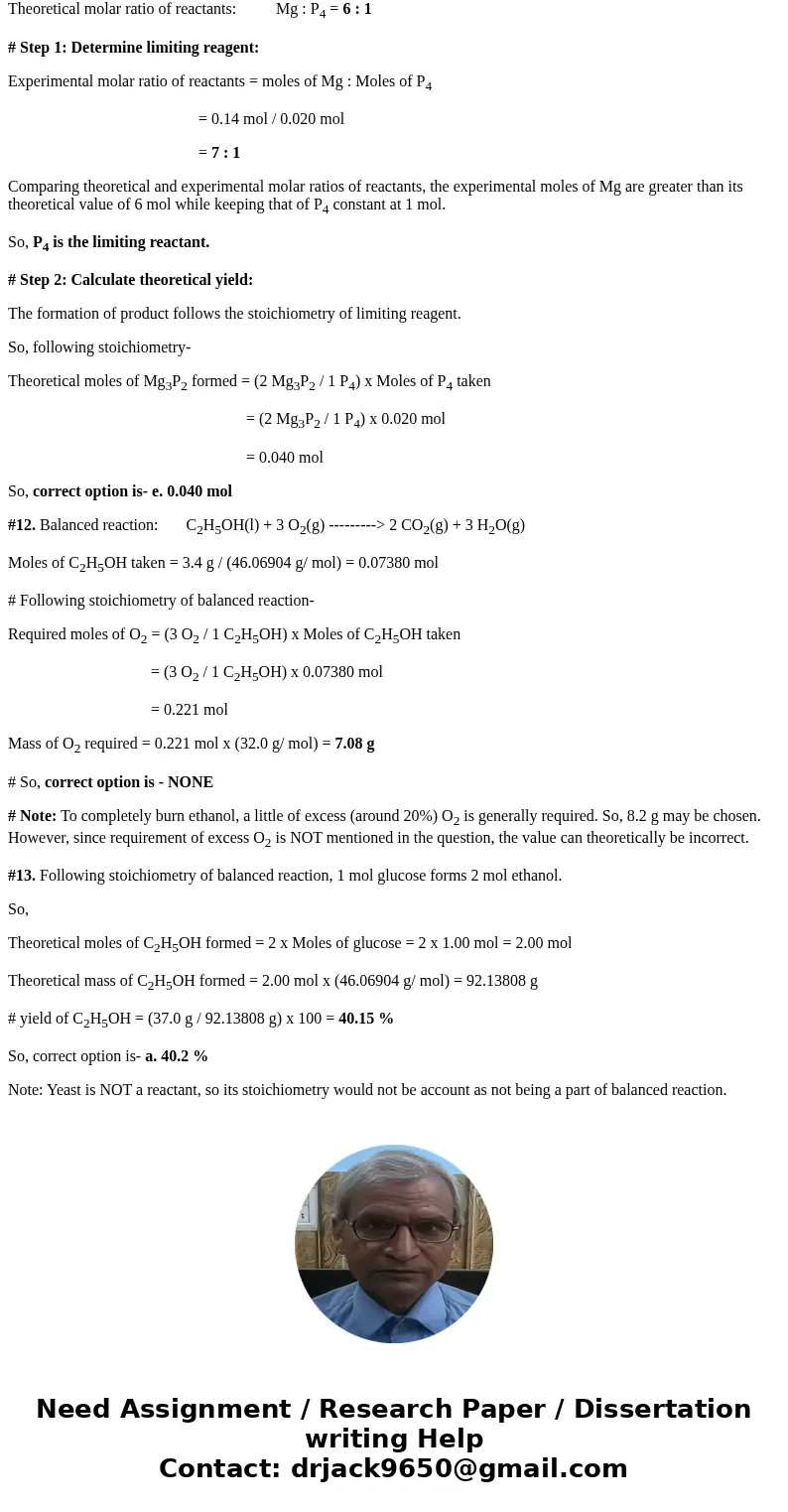Question 9 Sulfur hesxafuoride ts produced by reacting eleme
Solution
Ans. #9. Balanced reaction: 8S1(s) + 24 F2(g) -----------> 8 SF6
According to the stoichiometry of balanced reaction, 8 mol S1 reacts with 24 mol F2 to produce 8 mol SF6.
Theoretical molar ratio of reactants: S1 : F2 = 8 : 24 = 1 : 3
# Step 1: Determine limiting reagent:
Moles of S1 taken = Mass / Molar mass = 10.0 g / (32.066 g/ mol) = 0.3119 mol
Moles of F2 taken = 30.0 g / (38.0 g/ mol) = 0.7895 mol
Experimental molar ratio of reactants = moles of S1 : Moles of F2
= 0.3119 mol / 0.7895 mol
= 1 : 2.53
Comparing theoretical and experimental molar ratios of reactants, the experimental moles of F2 are less than its theoretical value of 3 mol while keeping that of S constant at 1 mol.
So, F2 is the limiting reactant.
# Step 2: Calculate theoretical yield:
The formation of product follows the stoichiometry of limiting reagent.
So, following stoichiometry-
Theoretical moles of SF6 formed = (8 SF6 / 24 F2) x Moles of F2 taken
= (8 SF6 / 24 F2) x 0.7895 mol
=0.26317 mol
Theoretical moles of SF6 formed = Theoretical moles x Molar mass
= 0.26317 mol x (146.0564192 g/ mol)
= 38.438 g
So, theoretical yield = 38.438 g
# Step 3: Calculate % Yield:
% yield = (Actual yield/ Theoretical yield) x 100
= (18.3 g / 38.438 g) x 100
= 47.61 %
So, correct option is- C. 47.6 %
#10. Moles of KHCO3 = 311 g/ (100.11544 g/ mol) = 3.1064 mol
According to the stoichiometry of balanced reaction, 2 mol KHCO3 produces 1 mol CO2.
So,
Moles of CO2 formed = ½ x Moles of KHCO3
= ½ x 3.1064 mol
= 1.5532 mol
So, correct option is- a. 1.55 mol
#11. Balanced reaction: 6 Mg(s) + P4(g) -----------> 2 Mg3P2
According to the stoichiometry of balanced reaction, 6 mol Mg reacts with 1 mol P4 to produce 2 mol Mg3P2.
Theoretical molar ratio of reactants: Mg : P4 = 6 : 1
# Step 1: Determine limiting reagent:
Experimental molar ratio of reactants = moles of Mg : Moles of P4
= 0.14 mol / 0.020 mol
= 7 : 1
Comparing theoretical and experimental molar ratios of reactants, the experimental moles of Mg are greater than its theoretical value of 6 mol while keeping that of P4 constant at 1 mol.
So, P4 is the limiting reactant.
# Step 2: Calculate theoretical yield:
The formation of product follows the stoichiometry of limiting reagent.
So, following stoichiometry-
Theoretical moles of Mg3P2 formed = (2 Mg3P2 / 1 P4) x Moles of P4 taken
= (2 Mg3P2 / 1 P4) x 0.020 mol
= 0.040 mol
So, correct option is- e. 0.040 mol
#12. Balanced reaction: C2H5OH(l) + 3 O2(g) ---------> 2 CO2(g) + 3 H2O(g)
Moles of C2H5OH taken = 3.4 g / (46.06904 g/ mol) = 0.07380 mol
# Following stoichiometry of balanced reaction-
Required moles of O2 = (3 O2 / 1 C2H5OH) x Moles of C2H5OH taken
= (3 O2 / 1 C2H5OH) x 0.07380 mol
= 0.221 mol
Mass of O2 required = 0.221 mol x (32.0 g/ mol) = 7.08 g
# So, correct option is - NONE
# Note: To completely burn ethanol, a little of excess (around 20%) O2 is generally required. So, 8.2 g may be chosen. However, since requirement of excess O2 is NOT mentioned in the question, the value can theoretically be incorrect.
#13. Following stoichiometry of balanced reaction, 1 mol glucose forms 2 mol ethanol.
So,
Theoretical moles of C2H5OH formed = 2 x Moles of glucose = 2 x 1.00 mol = 2.00 mol
Theoretical mass of C2H5OH formed = 2.00 mol x (46.06904 g/ mol) = 92.13808 g
# yield of C2H5OH = (37.0 g / 92.13808 g) x 100 = 40.15 %
So, correct option is- a. 40.2 %
Note: Yeast is NOT a reactant, so its stoichiometry would not be account as not being a part of balanced reaction.



 Homework Sourse
Homework Sourse